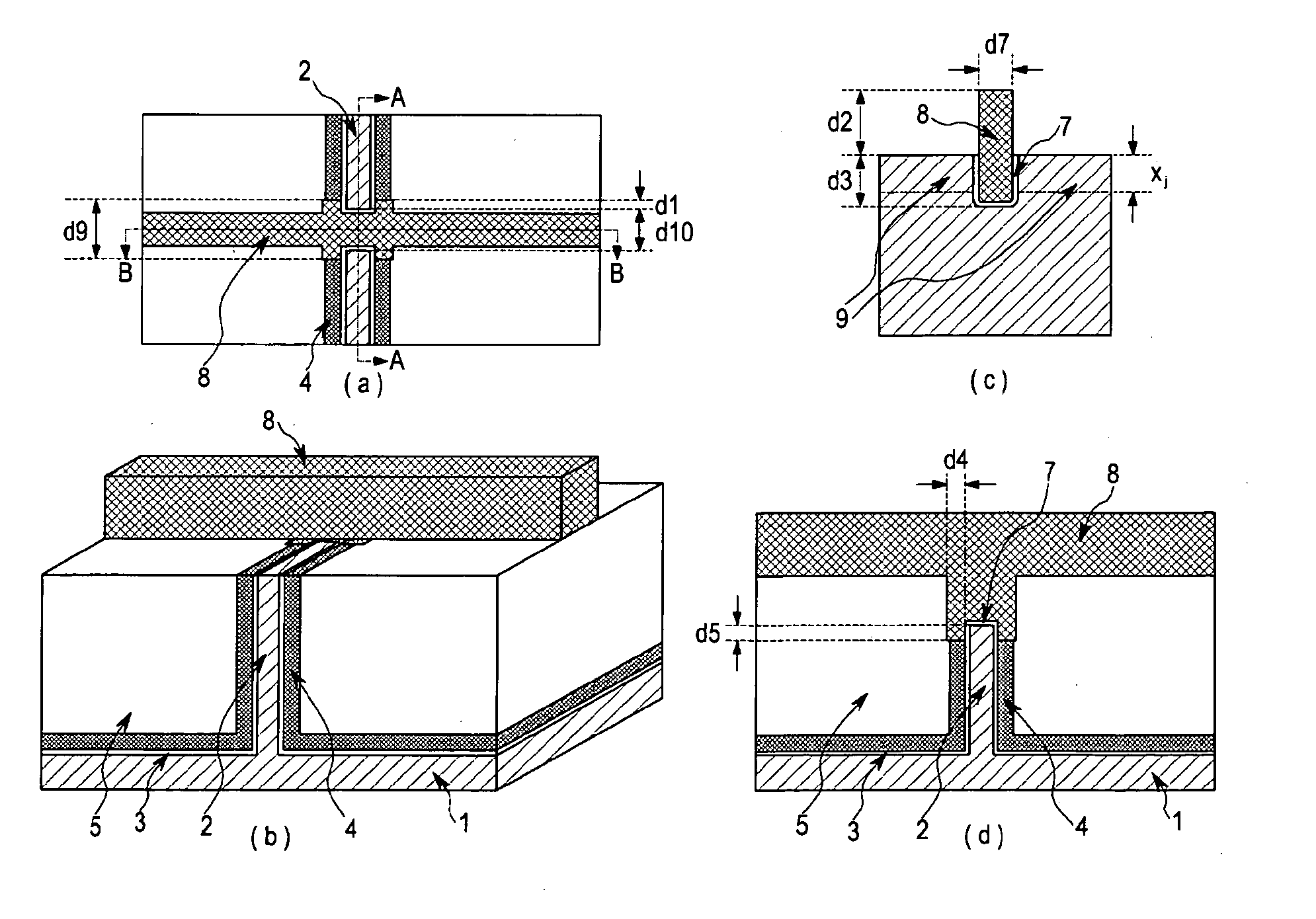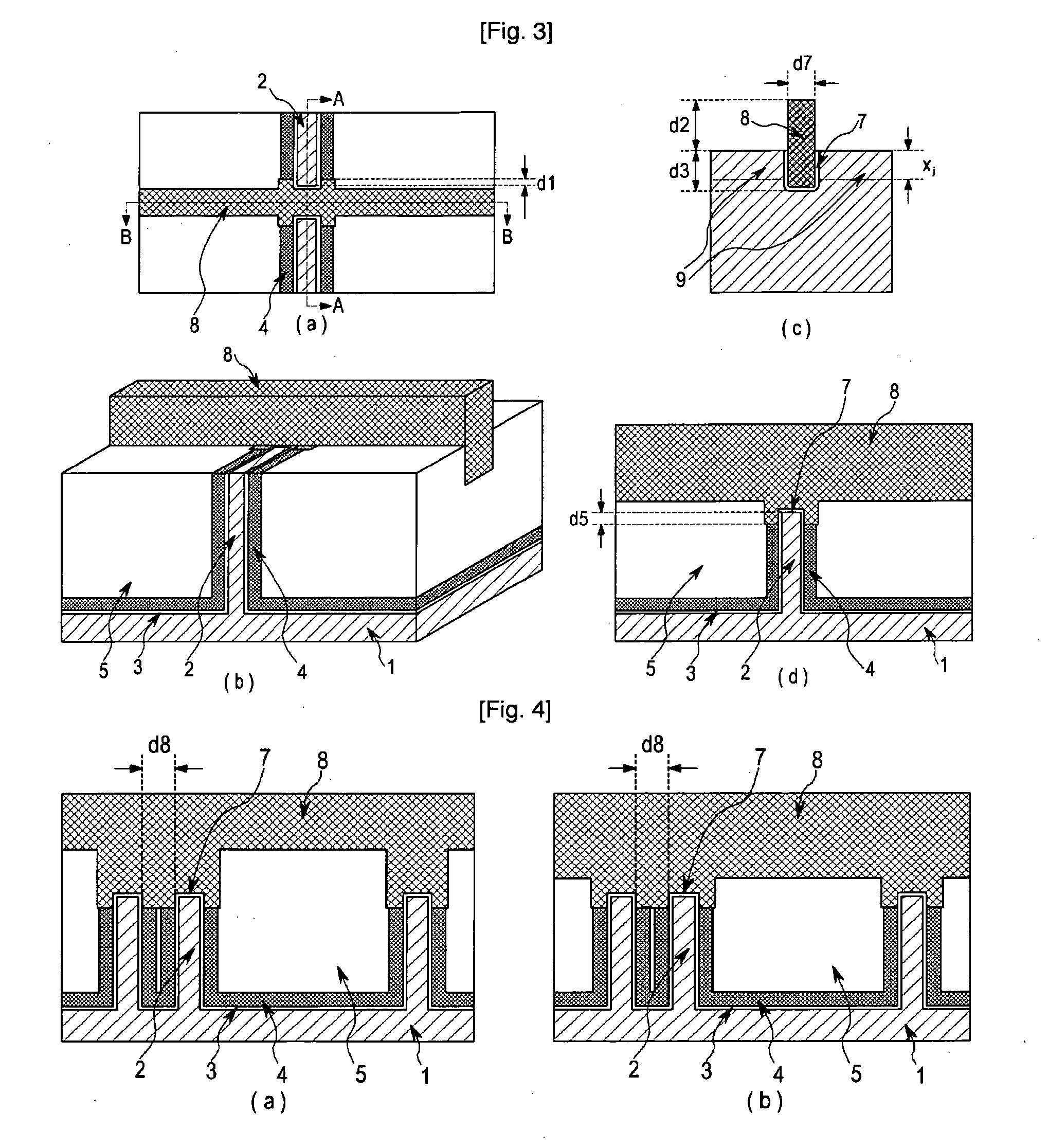Saddle type mos device
- Summary
- Abstract
- Description
- Claims
- Application Information
AI Technical Summary
Benefits of technology
Problems solved by technology
Method used
Image
Examples
Embodiment Construction
[0037]In a technical concept to achieve the above objects, the present invention provides a MOS device comprising: a silicon substrate I having formed thereon a wall-type silicon body 2 connected with the substrate; a first insulating film 3 formed on the surface of the silicon substrate 1 and the surface of the silicon body 2; a nitride film 4 formed on the first insulating film 3; a second insulating film 5 for element isolation formed on the nitride film 4; a region to be used as a channel, which is recessed from the surface of the silicon body 2 to a given depth; the nitride film 4 and the first insulating film 3 being aligned to the recessed silicon body and etched more than the recess width or depth of the silicon body 2; a gate insulating film 7 formed on the surface and sides of the recessed silicon body 2; a gate electrode 8 and a spacer 10 sequentially formed on the resulting structure; and source / drain regions 11 formed to a depth in the silicon body 2 on both sides of th...
PUM
 Login to View More
Login to View More Abstract
Description
Claims
Application Information
 Login to View More
Login to View More - R&D
- Intellectual Property
- Life Sciences
- Materials
- Tech Scout
- Unparalleled Data Quality
- Higher Quality Content
- 60% Fewer Hallucinations
Browse by: Latest US Patents, China's latest patents, Technical Efficacy Thesaurus, Application Domain, Technology Topic, Popular Technical Reports.
© 2025 PatSnap. All rights reserved.Legal|Privacy policy|Modern Slavery Act Transparency Statement|Sitemap|About US| Contact US: help@patsnap.com



